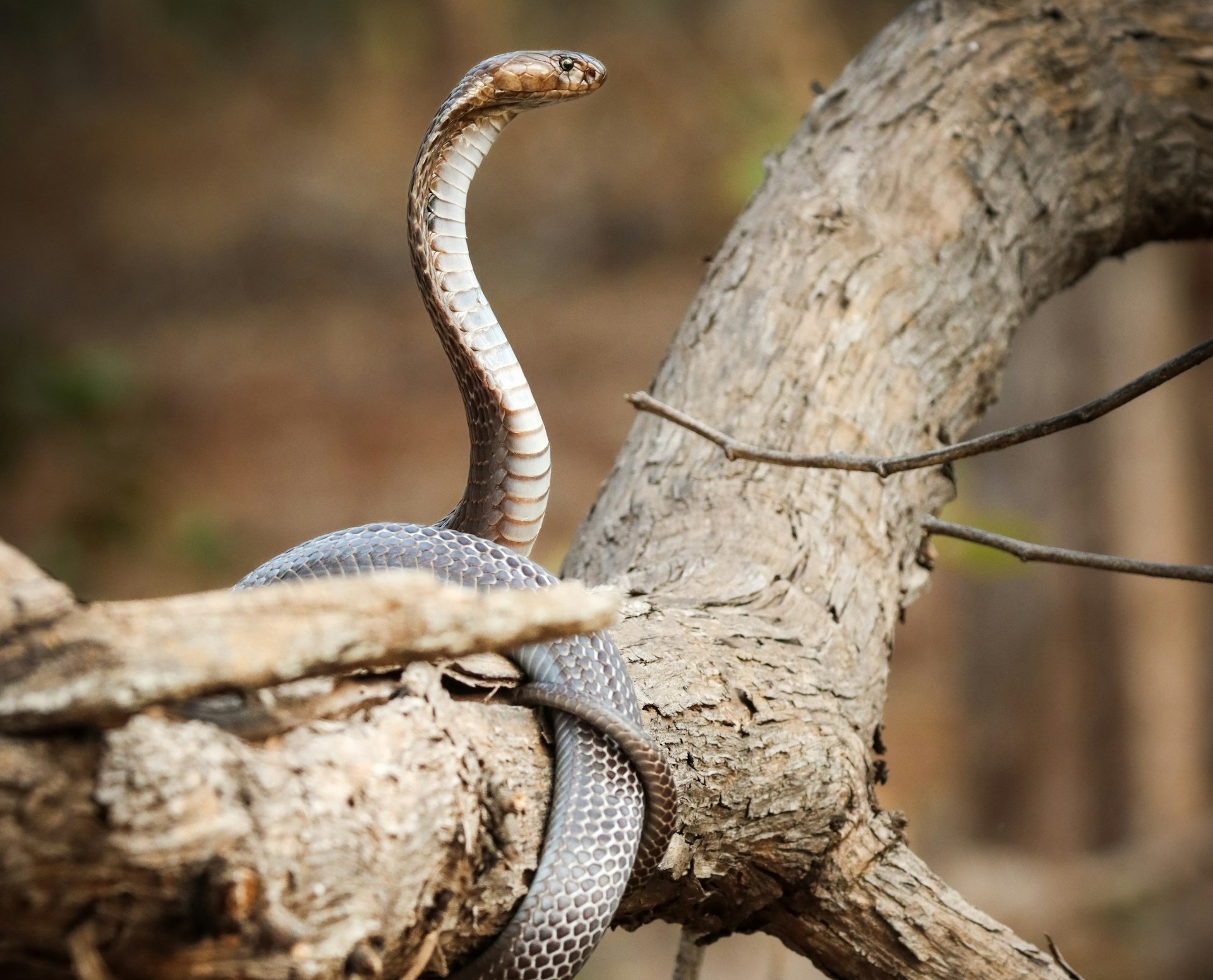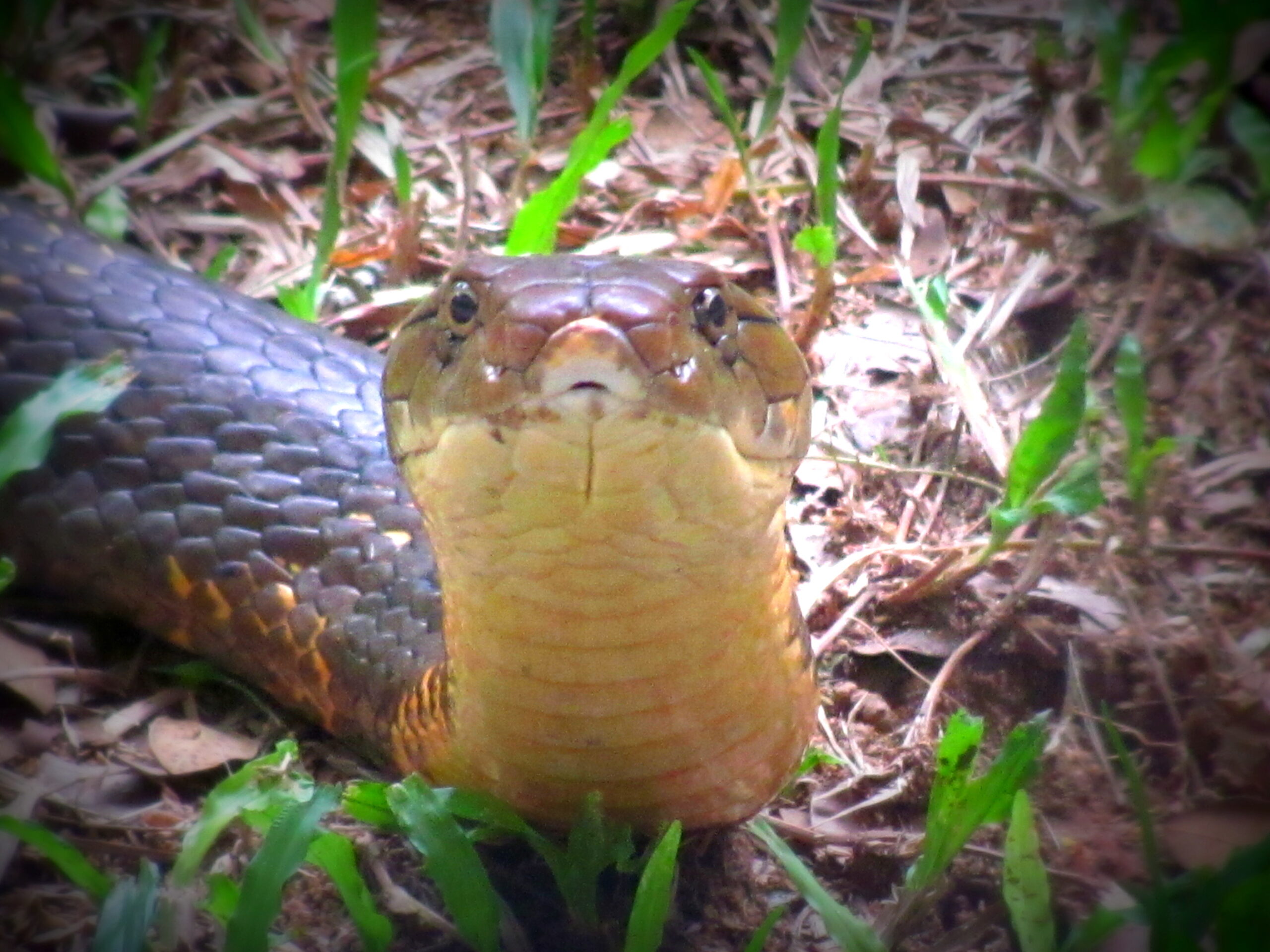The animal kingdom harbors many dangerous creatures, but few evoke the primal fear and fascination that venomous snakes do. These remarkable reptiles have evolved sophisticated venom delivery systems that can cause devastating effects on the human body, from paralysis to tissue destruction and organ failure.
While most snakes avoid human contact whenever possible, encounters do occur, sometimes with fatal consequences. Each year, an estimated 100,000 people die from snake bites worldwide, with millions more suffering serious injuries.
This article explores the world’s deadliest snake species, ranked not just by venom potency but also considering factors like aggression, distribution near human populations, and the availability of effective antivenom.
Understanding Snake Venom: A Deadly Cocktail
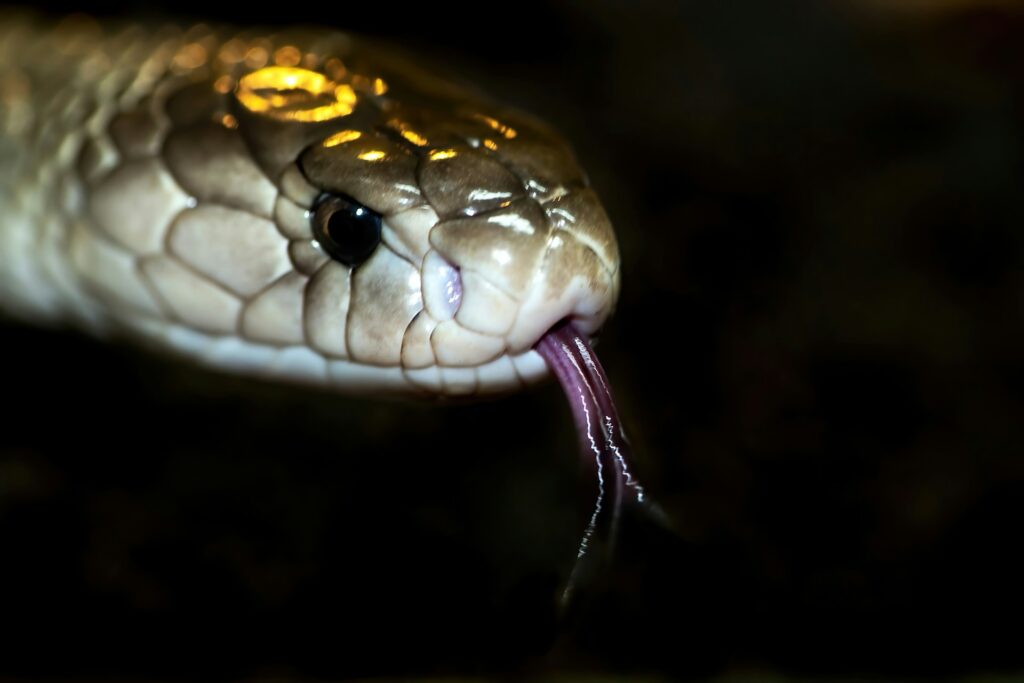
Snake venom is a complex mixture of proteins and enzymes that has evolved primarily as a hunting mechanism. Different species produce vastly different venoms, optimized to immobilize their preferred prey.
Neurotoxic venoms attack the nervous system, causing paralysis and respiratory failure. Hemotoxic venoms target blood cells and tissues, causing internal bleeding and tissue destruction.
Cytotoxic venoms destroy cells directly, leading to severe local damage. Many deadly species employ combinations of these venom types, making treatment particularly challenging.
Understanding these differences is crucial for proper medical response to bites and helps explain why some species with less potent venom can still be extremely dangerous to humans.
The Inland Taipan: Australia’s Deadly Secret
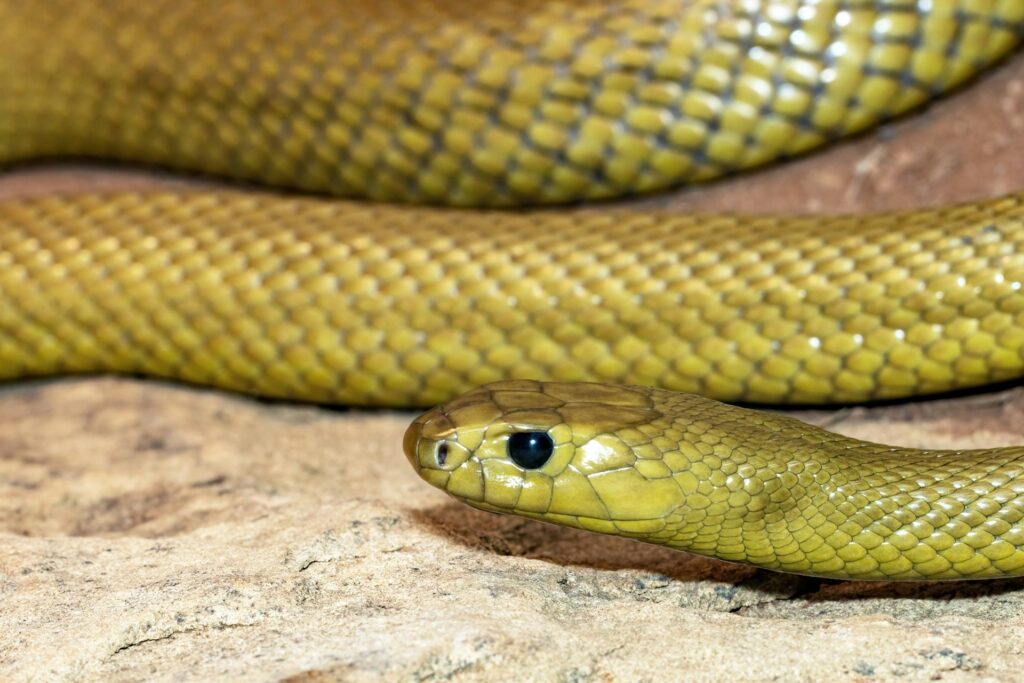
Often cited as having the most potent venom of any land snake, the Inland Taipan (Oxyuranus microlepidotus) possesses a truly formidable neurotoxic venom.
A single bite from this Australian native delivers enough venom to kill approximately 100 adults or 250,000 mice.
Despite this remarkable toxicity, the Inland Taipan rarely encounters humans due to its remote habitat in the arid central east region of Australia. Unlike many deadly snakes, the Inland Taipan actually has a relatively shy temperament and will generally try to escape rather than confront humans.
This combination of extreme venom potency but limited human interaction places the Inland Taipan in the unusual position of being simultaneously the most venomous yet not the most dangerous snake to humans.
The Eastern Brown Snake: Australia’s Lethal Neighbor
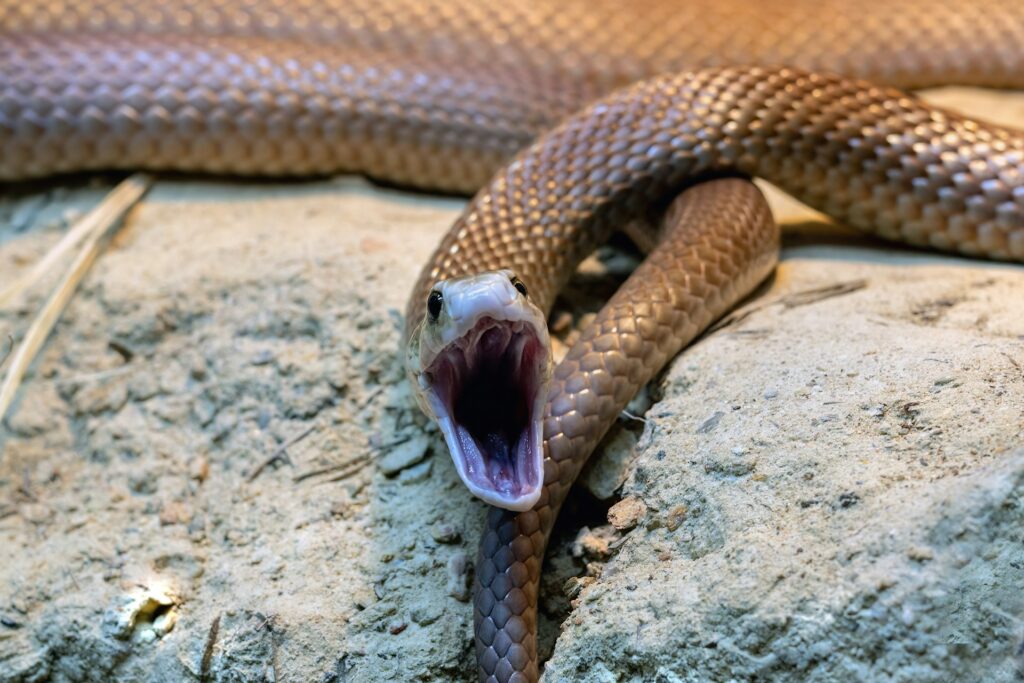
The Eastern Brown Snake (Pseudonaja textilis) is responsible for more snakebite deaths in Australia than any other species.
What makes this snake particularly dangerous is its combination of highly potent venom, aggressive defensive behavior when threatened, and proximity to populated areas.
Their venom contains powerful neurotoxins and coagulants that can cause paralysis, uncontrollable bleeding, and cardiovascular collapse.
Eastern Browns can be found in various habitats across eastern Australia, including suburban areas, where they often come into contact with humans.
Adding to their danger is their tendency to strike repeatedly when threatened and the fact that their bites may be initially painless, leading victims to underestimate the severity until symptoms develop.
The Coastal Taipan: Lightning-Fast and Lethal

The Coastal Taipan (Oxyuranus scutellatus) represents one of the most dangerous snake species due to its combination of extremely potent venom, large size, and explosive speed.
Native to coastal regions of northern and eastern Australia and Papua New Guinea, this formidable predator can grow up to 3 meters in length.
The Coastal Taipan’s venom is primarily neurotoxic and can cause respiratory paralysis, internal bleeding, and tissue death, with untreated bites having a mortality rate approaching 100%.
What makes encounters particularly dangerous is the snake’s nervous temperament and its tendency to deliver multiple strikes in rapid succession when cornered.
Before antivenom became available in 1956, almost all documented Coastal Taipan bites resulted in death, often within just a few hours.
The Black Mamba: Africa’s Lightning Assassin

The Black Mamba (Dendroaspis polylepis) has earned a fearsome reputation as one of Africa’s most dangerous snakes, and with good reason.
Named not for its body color (which is typically olive to gray) but for its inky-black mouth, this species combines exceptional speed, aggression when threatened, and highly potent neurotoxic venom.
Capable of reaching speeds up to 12.5 mph (20 km/h), the Black Mamba can deliver multiple strikes in quick succession when cornered.
Its venom attacks the nervous system and cardiovascular system simultaneously, potentially causing respiratory paralysis within 20 minutes.
Without antivenom, the mortality rate approaches 100%, and death typically occurs within 7-15 hours. Adding to their danger is their length (up to 14 feet), which gives them an unusually high striking range.
The Russell’s Viper: A Public Health Crisis
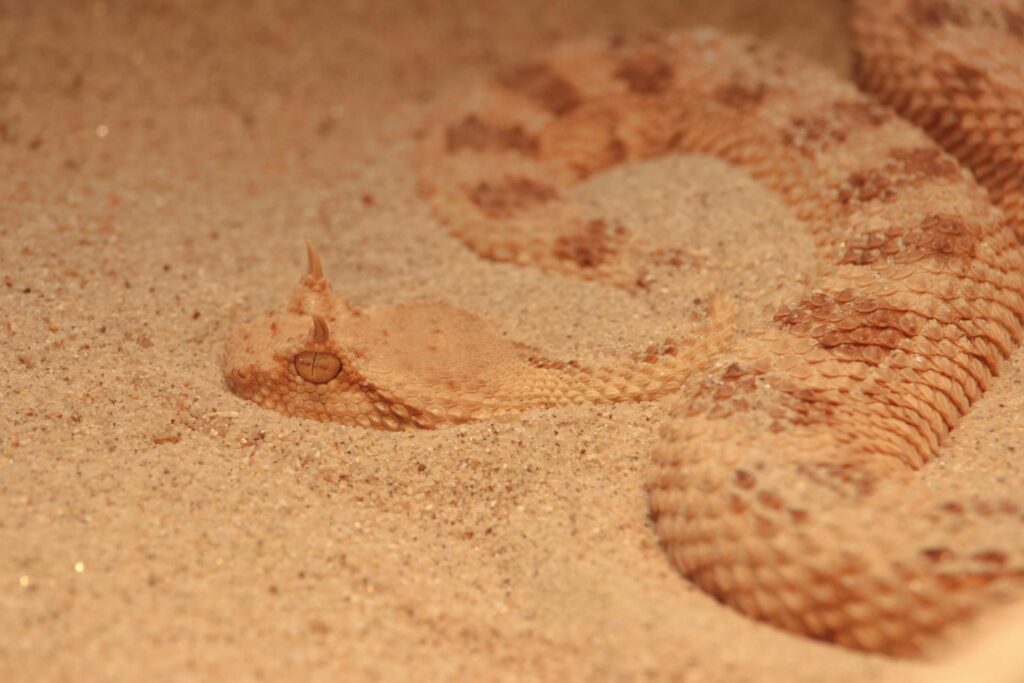
The Russell’s Viper (Daboia russelii) is responsible for more human deaths in its range than any other snake species, making it a genuine public health concern across
South and Southeast Asia. What makes this snake particularly dangerous is its widespread distribution in agricultural areas, where farmers often encounter them while working barefoot in rice paddies and fields.
Unlike some deadly species that prefer to avoid humans, Russell’s Vipers frequently enter human settlements looking for rodent prey. Their hemotoxic venom causes severe pain, swelling, bleeding disorders, and often acute kidney failure.
Even with treatment, bites can leave survivors with permanent disabilities including pituitary gland damage that leads to hormonal disorders.
In India alone, Russell’s Vipers are estimated to cause thousands of deaths annually.
The Saw-Scaled Viper: Small But Deadly

The Saw-scaled Viper (Echis carinatus) demonstrates that size isn’t everything when it comes to deadly snakes.
Despite rarely exceeding 30 inches in length, this relatively small viper is considered one of the world’s deadliest snakes based on human mortality counts.
Found across the Middle East, Central Asia, and parts of India and Africa, these snakes inhabit dry regions often in close proximity to human settlements.
Their hemotoxic venom destroys blood cells and disrupts clotting, leading to internal bleeding, tissue damage, and potentially death.
What makes the Saw-scaled Viper particularly dangerous is its defensive behavior—when threatened, it rubs its serrated scales together producing a distinctive “sizzling” warning sound, but it strikes with lightning speed if the warning is ignored.
Their widespread distribution in regions with limited medical facilities contributes significantly to their high fatality rate.
The Philippine Cobra: A Spitting Danger

The Philippine Cobra (Naja philippinensis) represents one of the deadliest true cobras in the world, with venom potent enough to kill an adult human within 30 minutes.
What makes this species particularly dangerous is its ability to not only deliver venom through biting but also by spitting venom with remarkable accuracy at the eyes of threats from distances up to 3 meters.
Its neurotoxic venom quickly attacks the respiratory system, leading to respiratory paralysis and death if antivenom isn’t administered promptly.
The Philippine Cobra is highly adaptable to various environments, including agricultural areas and human settlements, increasing the likelihood of dangerous encounters.
In the Philippines, this species is responsible for many snakebite fatalities, with the mortality rate from untreated bites estimated to be as high as 70%.
The Tiger Snake: Australia’s Banded Killer
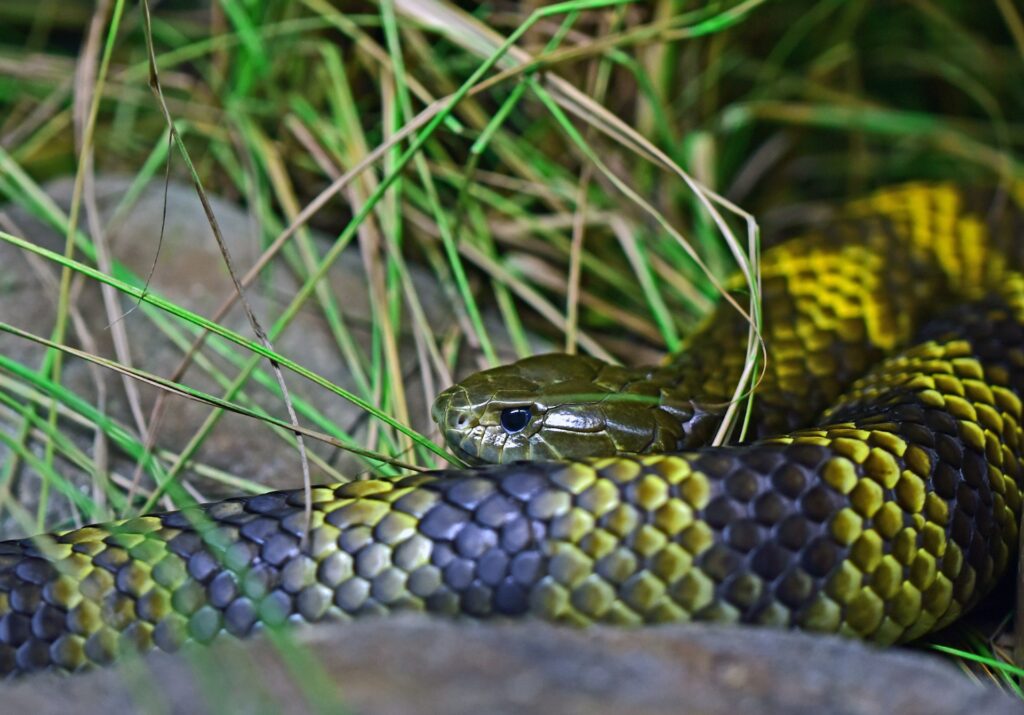
The Tiger Snake (Notechis scutatus) is among Australia’s most dangerous snakes, recognized by its distinctive banded pattern reminiscent of a tiger’s stripes, though coloration can vary significantly.
These highly venomous elapids possess a potent neurotoxic venom that causes rapid paralysis, blood coagulation abnormalities, and eventually respiratory failure if left untreated.
What makes Tiger Snakes particularly dangerous is their distribution in populated areas, including some suburbs of major Australian cities, and their tendency to stand their ground rather than flee when threatened.
When defending themselves, they flatten their necks and raise their heads in a distinctive threat display before striking.
Before the development of specific antivenom in the 1930s, Tiger Snake bites carried a frightening 60-70% mortality rate, making them a significant public health concern throughout Australia’s history.
The King Cobra: The Royal Serpent

The King Cobra (Ophiophagus hannah) commands respect as the world’s longest venomous snake, capable of reaching lengths over 18 feet (5.5 meters).
Unlike other cobra species that belong to the genus Naja, the King Cobra is the sole member of its genus, reflecting its unique evolutionary history.
Its neurotoxic venom isn’t the most potent drop-for-drop, but what makes the King Cobra exceptionally dangerous is the sheer volume it delivers—up to 7ml in a single bite, enough to kill 20 people or even an elephant.
When threatened, Kings display an impressive defensive posture, raising the front third of their body off the ground, flaring their distinctive hood, and producing a bone-chilling hiss that sounds remarkably like a growling dog.
Despite their fearsome reputation, King Cobras actually prefer to avoid human contact and primarily feed on other snakes, including venomous ones, earning them the nickname “the snake eater.”
The Common Krait: India’s Silent Killer
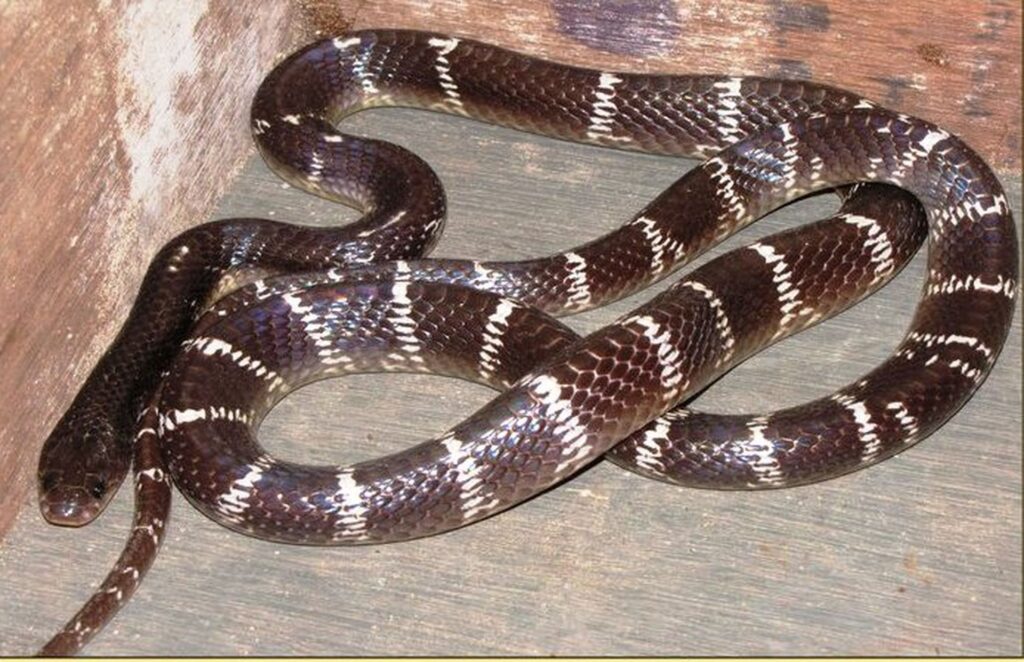
The Common Krait (Bungarus caeruleus) has earned the sinister nickname “the silent killer” due to its nocturnal hunting habits and nearly painless bite.
Native to the Indian subcontinent, this highly venomous elapid snake is responsible for thousands of deaths annually across India, Pakistan, and neighboring countries.
What makes the Common Krait particularly dangerous is its tendency to enter human dwellings at night in search of prey and sometimes bite sleeping victims who unknowingly roll onto them in bed.
These bites often go unnoticed until serious symptoms develop, as they cause minimal local pain or swelling. The Krait’s potent neurotoxic venom causes progressive paralysis that eventually affects respiratory muscles, leading to suffocation if not treated promptly with antivenom.
Even more troubling, Kraits are known to be resistant to many traditional snake repellents, making prevention particularly challenging in rural areas.
The Boomslang: A Hidden Threat
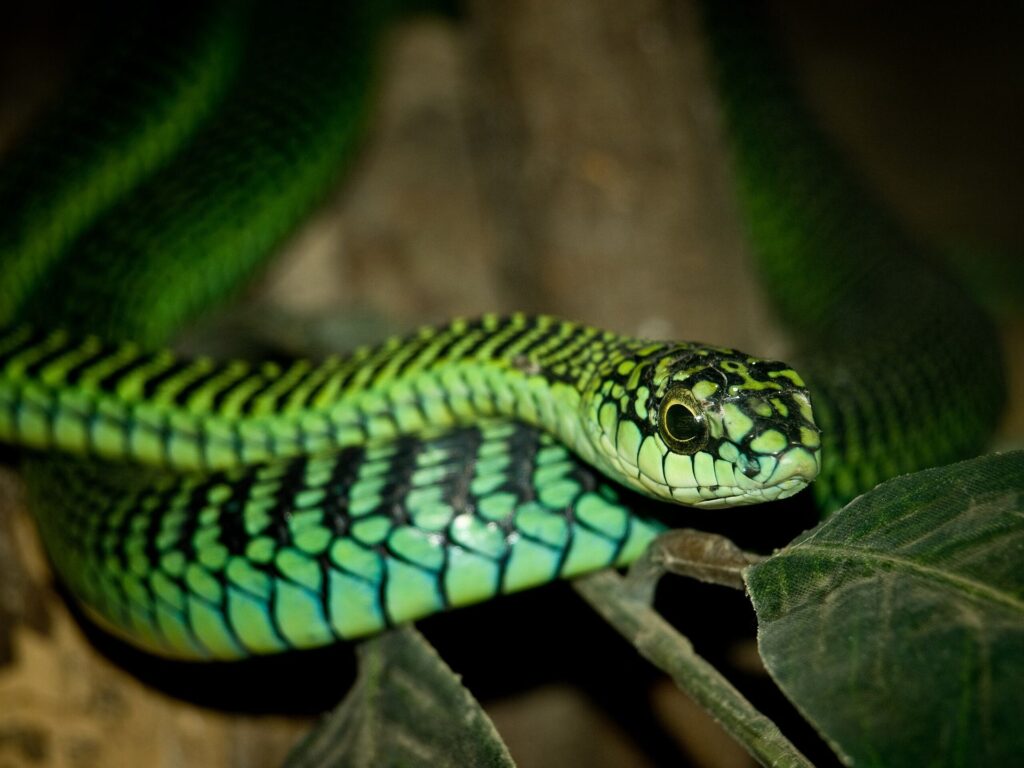
The Boomslang (Dispholidus typus) demonstrates that appearances can be deceiving in the world of venomous snakes.
This slender, tree-dwelling African species was long considered harmless to humans until a prominent herpetologist, Karl Schmidt, died in 1957 after being bitten and documenting his symptoms as they progressed.
The Boomslang possesses a highly potent hemotoxic venom that causes catastrophic internal bleeding, with victims often bleeding from multiple orifices including the gums, nose, and even eyes.
What makes this snake particularly dangerous is its rear-fanged delivery system, which was incorrectly assumed to make it harmless to humans until multiple fatal cases proved otherwise.
Despite their extremely dangerous venom, Boomslangs are generally shy and non-aggressive, preferring to remain camouflaged in trees and rarely biting humans except when handled or cornered.
Their brilliant green coloration (in males) and large, egg-like eyes give them a deceptively beautiful appearance that belies their deadly potential.
The Fer-de-Lance: Central America’s Notorious Pit Viper

Zdeněk Macháček via (Unsplash)
The Fer-de-Lance (Bothrops asper) is responsible for more snakebite fatalities in Central and South America than any other species, earning it the ominous nickname “the ultimate pit viper.”
This highly adaptable snake thrives in various environments from tropical rainforests to agricultural areas, frequently bringing it into contact with humans.
The Fer-de-Lance possesses a complex venom containing both hemotoxic and cytotoxic components that cause massive tissue destruction, internal bleeding, and potential amputation of affected limbs even in survivors.
What makes this species particularly dangerous is its unpredictable temperament—they can be highly aggressive when threatened, capable of striking with blinding speed, and can deliver a large venom dose even as juveniles.
Their excellent camouflage makes them difficult to spot in leaf litter, and their habit of freezing rather than fleeing when approached leads to many accidental encounters with devastating consequences.
Snake Safety: Preventing Deadly Encounters
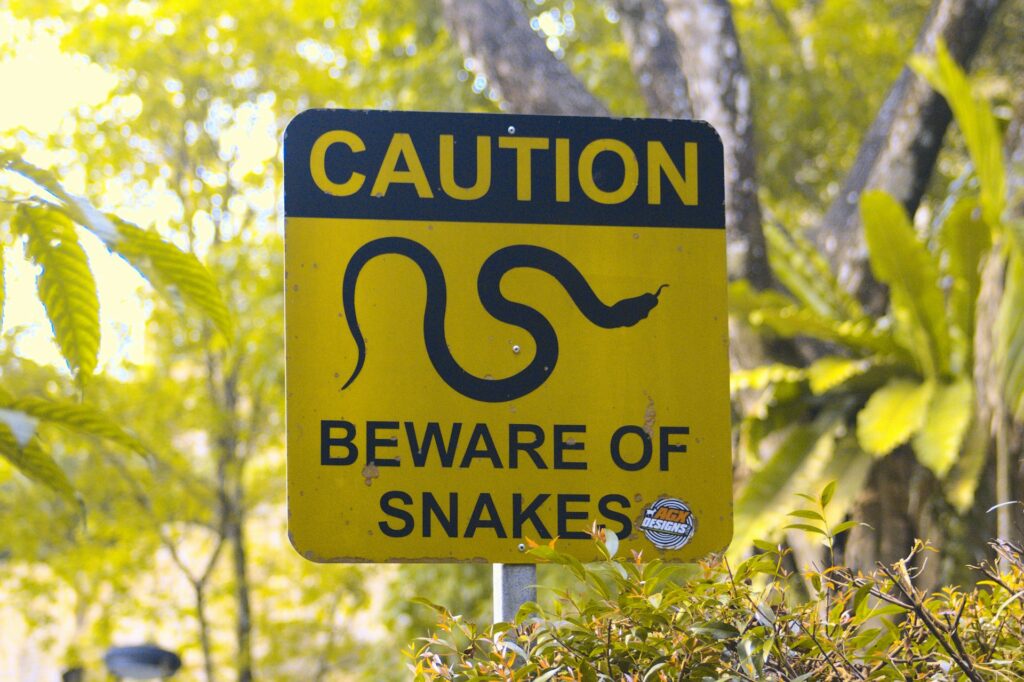
Understanding how to avoid and respond to potential snake encounters can significantly reduce the risk of dangerous bites.
When hiking in snake territory, always wear appropriate footwear like closed boots that cover the ankles, and use a walking stick to probe areas ahead before stepping.
Avoid placing hands or feet in areas you cannot clearly see, such as under rocks or logs where snakes might be sheltering. Learn to recognize the venomous species in your region and their preferred habitats.
If you do encounter a snake, remain calm and slowly back away—most snakes will not pursue humans unless provoked.
In the event of a bite, keep the victim calm and immobile, remove constrictive items like rings or watches, and seek immediate medical attention without attempting outdated first aid measures like tourniquets or venom extraction.
Remember that even non-venomous snake bites require medical attention to prevent infection, and proper identification of the snake species can be crucial for appropriate treatment.
The Global Snakebite Crisis: A Neglected Tropical Disease

While deadly snakes capture our imagination, the true scale of human suffering from snakebites represents an overlooked public health crisis affecting primarily the world’s poorest communities.
The World Health Organization now classifies snakebite envenoming as a Neglected Tropical Disease, estimating that 1.8-2.7 million people are bitten annually, resulting in 81,000-138,000 deaths and 400,000 life-altering disabilities.
The heaviest burden falls on rural agricultural communities in Africa, Asia, and Latin America, where access to antivenom and medical care is often limited or nonexistent.
Economic factors compound the problem, as effective antivenoms remain expensive to produce and challenging to distribute to remote regions where they’re most needed.
Conservation efforts present another complexity, as many venomous snake species face habitat loss and persecution despite their ecological importance.
Addressing this crisis requires a multifaceted approach including improved antivenom production, better distribution systems, healthcare worker training, and community education about prevention and first response.
Conclusion
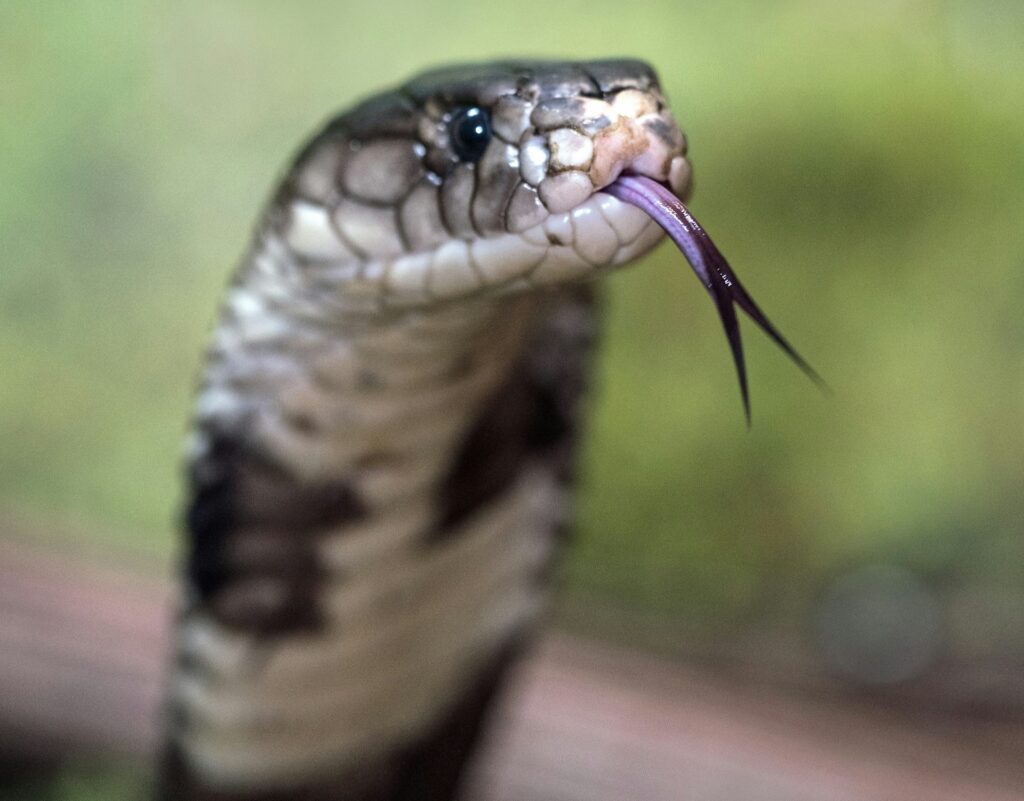
The world’s deadliest snakes represent an extraordinary example of evolution’s power to create both beautiful and dangerous creatures.
While their venoms have evolved primarily to help them secure prey, human encounters sometimes turn these defensive adaptations lethal.
Understanding these remarkable reptiles through the lens of both respect and caution allows us to better appreciate their ecological importance while minimizing risks to human communities.
As medical technology improves and conservation efforts continue, we can hope for a future where both snakes and humans can coexist with decreasing conflict, and where the devastating impact of snakebites on vulnerable communities becomes a challenge of the past.

